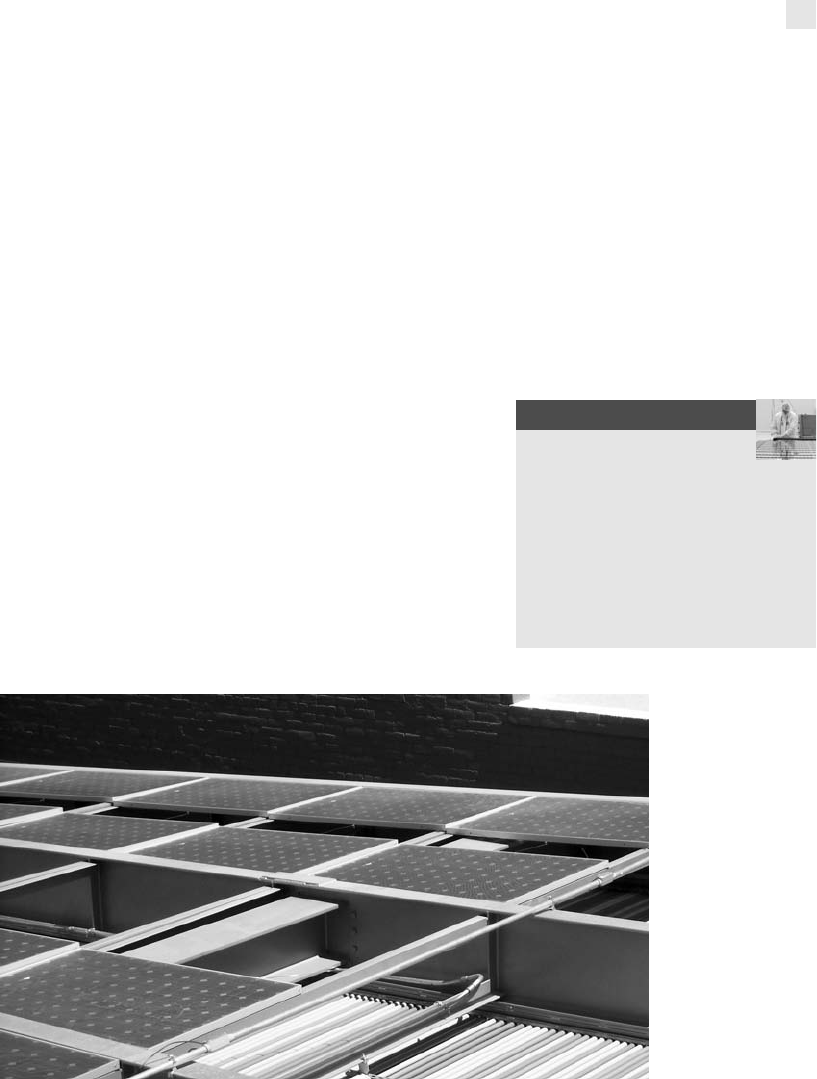
Maintenance
Although PV systems are relatively low-maintenance, make sure that the system is
serviced as prescribed. Use the operating instructions as a maintenance guide.
Also, pay attention to local environmental conditions and service requirements
based on your geographic location. Provide the customer with a complete recom-
mended schedule of system maintenance items. Offering this is a professional
courtesy to the customer and goes a long way toward great customer service.
Installing Subsystems and Components at the PV Site
All PV system electrical components have specific mounting requirements.
Inverters are heavy, weighing as much as 150 pounds or more. Mounting an
inverter requires planning, measurement, skill, and strength.
It usually requires more than one person to complete the job.
Remember to consult the manufacturer’s instructions prior to
mounting. Also, check to confirm that what you ordered is
what was delivered. Ordering the right size inverter for the
installation will save you headaches on down the line.
Map out the AC and DC connections location clearly. A
pre-installation schematic with dimensions is very helpful.
This planning leads to a tidy, professional installation. Arrange
batteries, charge controllers, inverters, and disconnects as
close as possible to AC and DC connection points. Make sure
Design and installation of complex projects requires planning coordination and discussion to
get it right.
Courtesy of PerfectPower, Inc.
TECH TIPS
Attach plywood to the wall studs
if an inverter is mounted over plaster
or drywall. Secure the inverter to the
plywood and the wall studs using a
lag bolt or a screw. This enables the
inverter to have some solid connection
to the building frame. Without this, the
inverter might fall off the wall.
CHAPTER 10 Quality Control, Testing, Troubleshooting, Monitoring 233
..................Content has been hidden....................
You can't read the all page of ebook, please click here login for view all page.
